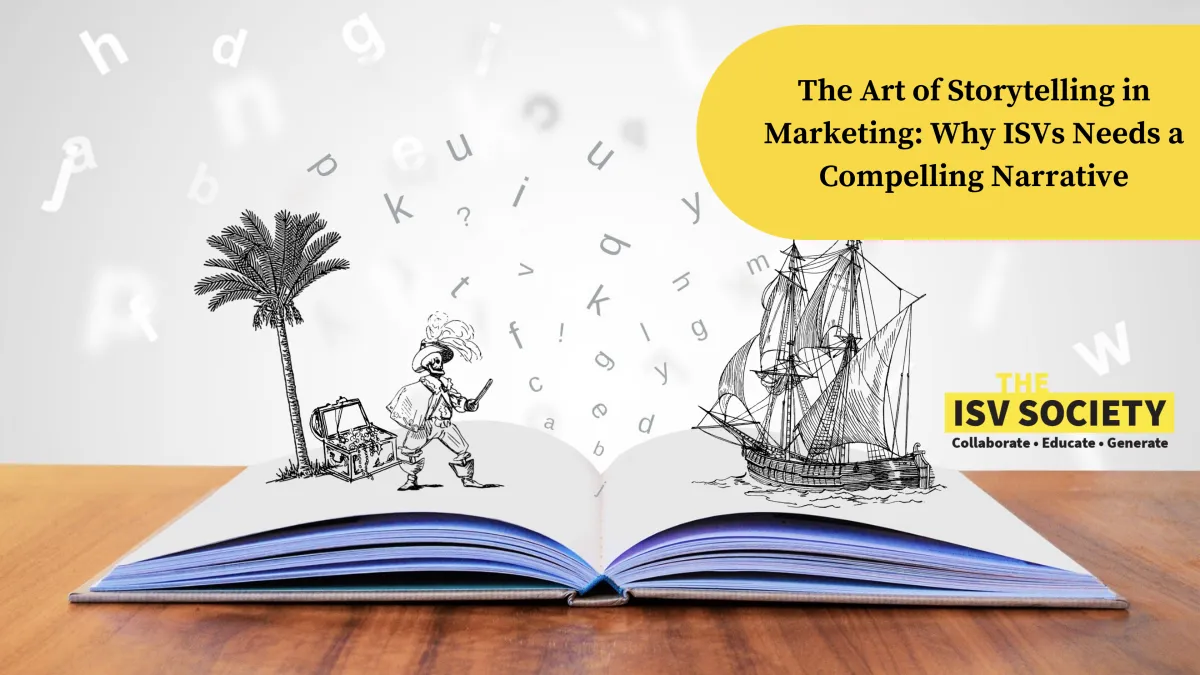
Blog Fest
Get the latest trends, tips-n-tricks, event updates, and more.

The Art of Storytelling in Marketing: Why ISVs Needs a Compelling Narrative
Introduction:
In the fast-paced world of software, it's easy to get caught up in the technical aspects of your product or service. After all, your software's features and capabilities are what make it valuable, right? While that's undoubtedly true, there's a vital element that often gets overlooked in channel marketing—the art of storytelling.

In this digital age, where every ISV is striving to carve its niche and make a lasting impact, storytelling has emerged as a pivotal strategy. It's not just about showcasing your product; it's about creating an emotional connection with your audience, engaging their hearts and minds, and leaving a memorable impression. Let's dive into the why and how of storytelling in channel marketing.
The Importance of Storytelling in Marketing for ISVs:
Humanizes Your Brand: When you think of software, you might picture lines of code and data flows. But behind every ISV, there's a team of passionate individuals who share a common vision. Sharing stories about your team and their journey humanizes your brand, making it relatable and approachable.
Engages Emotions: Studies have shown that emotions play a significant role in decision-making. Stories have the power to evoke emotions, creating a deeper and more memorable connection with your audience. When your audience feels something, they're more likely to remember your brand.
Differentiates Your Brand: In a world saturated with software solutions, standing out is crucial. Your software might have similar features to competitors, but your story is unique. It's a story your competitors can't replicate. A compelling narrative sets you apart from the crowd.
Clarifies Your Purpose: A well-crafted brand narrative communicates your mission and values. It helps potential customers understand why you exist and what you stand for. When your audience aligns with your vision, they're more likely to become loyal customers.
Tips for Crafting a Compelling Brand Narrative:
Know Your Audience: Start by understanding your target market deeply. What are their pain points, aspirations, and interests? Tailor your narrative to address their specific needs and desires. This is where your buyer persona can play a huge part in the story telling process.
Identify Your Unique Selling Proposition (USP): What makes your software solution stand out? Highlight your USP in your narrative. Explain why it matters and how it benefits your customers.
Create a Hero: Every great story has a hero. In your narrative, position your buyer persona as the heroe who overcome challenges with the help of your software. This empowers them and demonstrates the value you provide.
Use Authenticity: Authenticity builds trust. Share real stories about your team, your customers, and the journey you've taken. Authenticity creates a genuine connection.
Emphasize Values: If your ISV has strong values, such as sustainability or inclusivity, weave these into your narrative. Show how your values align with your customers' values.
Visual Storytelling: Visual content is highly engaging. Incorporate videos, infographics, and images to enhance your storytelling. These visuals can complement your narrative and make it more compelling.
Consistency: Ensure that your narrative aligns with your brand's messaging across all channels – website, social media, emails, and more. Consistency reinforces your brand identity.
Solve Problems: Stories are about solving problems. Showcase how your software addresses specific pain points or challenges faced by your target audience. Explain how you make their lives easier or better.
Invoke Emotion: Craft stories that evoke emotions. Whether it's humor, empathy, or inspiration, emotions make your narrative memorable. They leave a lasting impression.
Call to Action: Conclude your narrative with a clear CTA that encourages the audience to take action. Whether it's signing up for a trial, requesting a demo, or sharing your story, make it easy for them to engage further.
In a competitive market, your story needs more than just technical expertise; it needs a narrative that captivates and connects with your audience. By embracing the art of storytelling, you'll create a brand identity that stands out, builds trust, and resonates with your partners and customers.
By following these storytelling principles and weaving them into your marketing strategy, you can create a compelling narrative that draws customers and partners in, builds brand loyalty, that sets you on the path to marketing success.
© Copyright 2022 The ISV Society
